- Home
- Peter Ackroyd
Charlie Chaplin Page 10
Charlie Chaplin Read online
Page 10
His reaction to this evidence of his great fame was equivocal. He enjoyed it, of course, and the adulation of the crowd always mattered to him; he liked being famous, and became annoyed or depressed if people failed to recognise him in public places. Yet on another level the popularity drove him further into himself; he became more aware of his fundamental isolation. The thoughtless public were cheering a person, or persona, who did not really exist. Success only intensified that irritable sensation of being in need or want of something—or someone—he could not find. His egocentricity, which he himself admitted, left him in perpetual exile. He was tired and, left to himself, withdrawn and melancholy.
Sydney greeted him in New York, with a waiting limousine ready to snatch him away from the crowds. He showed him a newspaper headline, “HE’S HERE!,” and another that read “CHARLIE IN HIDING!” He did not need to go into hiding. If he was not expected anywhere, and without his comedy make-up, he was not generally recognised. A female New York newspaper reporter, Miriam Teichner, noticed the effect. “Well,” the clerk at the Plaza Hotel asked her, “do you think you’d know him if you saw him?” She replied that she thought she would. “Well, he’s right here in the lobby.” She looked, and looked, but she could not see him. She asked a maid to go over to him and give him her card.
When he appeared at an actors’ benefit concert at the Hippodrome in New York he led the John Philip Sousa band to only modest applause. Who was this man? When, however, he executed a few steps of the Chaplin walk, the theatre erupted with cheers and applause.
And what did people actually see when they met Chaplin? He was not tall; estimates vary between five feet four inches and five feet six and a half inches. Yet it was agreed that he looked very small. An acquaintance from the 1940s, Alistair Cooke, an English journalist, remembered him as being “tiny.” His head was a little too large for his lithe and delicate body, an effect that was accentuated by his film persona. Miriam Teichner first noticed his smile, saying that “if there could be such a thing as a smile with a man instead of a man with a smile, Charlie Chaplin’s smile is it.”
He was considered by most to be good-looking, with crinkly coal-black hair always ready to curl and large eyes; he had skin like ivory and neat white teeth; his lips were firm and meaty, while his nose was prominent. His eyes were deep blue, an effect of course not seen on the screen. When they were circled with black make-up, in his films, they appear to sink down into his face like pools of sorrow. Some other salient facts might be mentioned here. He was left-handed. He was always smoking and at least until middle age generally had a cigarette in his hand. It was a sign of his nervous disposition.
On 26 February 1916 Charles Chaplin was standing in Times Square among small knots of people when he saw, on an electric sign, the news that “Chaplin signs with Mutual at six hundred and seventy thousand a year.” He had come to New York to make a deal. Sydney managed all of the negotiations, although Chaplin himself had an acute and highly developed business sense. As Sam Goldwyn was later to observe, “Chaplin’s no negotiator—he just knows he can’t take anything less.”
Several companies were naturally interested in enlisting Chaplin’s services; he was after all by far the most popular film actor of the age. The arrangement he signed with the Mutual Film Company of New York was unprecedented; at one stroke he became, at the age of twenty-six, the most highly paid employee in the world. Reel Times reported that “next to the war in Europe Chaplin is the most expensive item in contemporaneous history.” Soon after signing the contract with Mutual Chaplin told a journalist that “I am left free to be just as funny as I dare, to do the best work that is in me, and to spend my energies on the thing that people want. I have felt for a long time that this would be my big year and this contract gives me my opportunity. There is inspiration in it.” His immense popular success meant that he now had the power to control all aspects of film production, from rehearsals to the editing room. Mutual had agreed to equip a new studio for him, and to pay for all production costs. He realised, too, that he could continue to fashion and develop the most significant screen character in the history of the cinema.
He had agreed to make twelve two-reel films, at the rate of one each month, for a subsidiary of Mutual to be called the Lone Star Film Corporation; Chaplin himself was of course the lone star. He later described this period as the happiest of his career, and it has been justly concluded that the films he made at Mutual are indeed his funniest and most joyous. He commuted each day from the Los Angeles Athletic Club, where he had once more taken up residence, to the studio south of Santa Monica Boulevard. It was described as being situated “on the fringe of the motion picture studio area in Hollywood”; it comprised a whole block “and is probably the most pleasant studio in California.”
It was here that he learned how to perfect his techniques of film-making. His principal cameraman, Rollie Totheroh, explained that “he didn’t have a script at the time, didn’t have a script girl or anything like that, and he never checked if the scene was in its right place or that continuity was followed. The script would develop as it went along … He’d have an idea and he’d build up. He had a sort of synopsis laid out in his mind but nothing on paper.” He arrived every day at about nine o’clock in the morning, went into his dressing room before emerging in the costume of Charlie. He then gathered his collaborators, and gave them an account of the scene about to be played.
He relied upon intuition, instinct and inspiration; he would improvise with new props and new comic situations. “Suppose we make him wriggle out and get away,” he might say, “while the policeman’s talking to the other fellow. That should make them laugh.” He sometimes asked his carpenters to build a set only to see if it might provoke some new idea or story. He would revise scenes or create new ones on the set. An actor might be obliged to change his or her make-up and play three or four different parts until Chaplin found the effect he wished for. Elaborate and complex scenes were shot only to be discarded, an almost unprecedented act in a film studio. “No,” he would say, “that’s not it.” He would think of new beginnings and new endings as he worked. To misquote Carlyle on the nature of genius, he had an infinite capacity for taking pains; each shot might be taken and retaken scores of times until he believed it to be as near perfect as possible. He was as methodical and as systematic as an engineer or craftsman.
There were occasions when the development of a story seemed to pose intractable problems. He would then retire to think, to meditate, and to imagine. In these periods he could be ferocious, almost savage, in his reaction to unwelcome guests. He had to be alone, untouched, unimpeded. He became a world to himself.
The other performers were only there to complement, and to act as foils for, the “little fellow.” They had no independent life of their own. They were not there to interrupt him. He was the only one that mattered. In a sense they became the automatons of Charles Chaplin, given no room to improvise or experiment with their roles. They followed his instructions exactly. “Just an ever so little more in that fling of the arm, Tom,” he might say, “yes, that’s it. You’ve got it.” He told them, “Above all, don’t act!” Don’t act. That was his refrain. You must think the part. You must be sincere and natural in order to be convincing. They then became a suitable backdrop for his performance.
Edna Purviance was still his leading actress but for some comic roles he brought in other performers such as Albert Austin, Henry Bergman and Eric Campbell. Campbell was the mountainous Scotsman who became the comic villain eternally opposed to the Tramp. Chaplin was staying close to his roots in English music hall; both Austin and Campbell had previously worked in the productions of Fred Karno. Chaplin made it clear to Totheroh, however, that he was always to be at the centre of each scene with the lighting and camera work arranged around his actions. As he prepared to go in front of the camera Edna Purviance would call out, “Go on. Be cute!”
His first film for Mutual, The Floorwalker, had a difficult and protra
cted genesis. Chaplin at first had no idea whatsoever. It was his practice to walk through the streets of Los Angeles with Sydney beside him; he would spot a scene, or an object in a shop window, and Sydney would transcribe his comments on its possible comic use. One day, while searching for stories, he was present when a customer slipped and skidded down one of the new escalators. At once he had his central image. He ordered that an escalator be constructed on the set, and a department store built around it. It was a brilliant concept of his own devising; nobody had thought of using an escalator before.
The story itself is not important except as a showcase for Chaplin’s various comic gifts. In one scene he creates a sketch on dual identity, with his “double” played by another actor as if they were both standing in front of a mirror. In another scene he launches into an elaborate and graceful ballet, complete with leaps and entrechats and pirouettes, for the simple reason that he feels like it; as he dances he is perfectly detached from the actors around him and, at the end of the sequence, he bows to the cinema audience. If all art aspires to the condition of music, as Walter Pater suggested, than all silent film aspires to the condition of ballet.
The virtues of the Mutual contract are already apparent in this first film. The sets are more durable and realistic; the production is more accomplished, and the slapstick more elegant. The plots are also more highly developed, with a recognisable narrative structure; it was no longer comic mayhem but “situation” comedy. With the same performers around him, in each of the pictures, he was in a position to create what can be called ensemble acting.
In May 1916, Chaplin was afforded the most important praise he had as yet received. In Harper’s Weekly, “The Art of Charles Chaplin” by Minnie Maddern Fiske stated that many “cultured, artistic people are beginning to regard the young English buffoon, Charles Chaplin, as an extraordinary artist as well as a comic genius.” She compared his vulgarity to that of Aristophanes and Rabelais, Swift and Shakespeare. She went on to say that “if it is true that the test of an artist’s greatness is the width of his human appeal, then Charlie Chaplin must be entitled to a place amongst the foremost of all living artists.” Who else has appealed to the Mongolian and Slavonic races, to the Latins and the Teutons? Chaplin was flattered and elated by the praise. Inspired by the comparison he tried to read a play by Aristophanes; but he could not quite manage it.
8
Mutual Relations
With fame and fortune by his side, Chaplin began to mingle more frequently with Hollywood society. He was meeting eminent émigrés such as Constance Collier, the English actress, and opulent Americans such as the first Mrs. Vanderbilt. His ventures into fashionable life were now part of a larger and more prominent profile. He hired a Japanese chauffeur, Toraichi Kono, for his newly purchased Locomobile; he described him as “my Man Friday. He is everything.” Kono, as bodyguard and servant as well as driver, remained with him for thirty years. He also employed a valet who acted as a secretary, Tom Harrington, a tall and lean man who was both confidant and amanuensis.
Fame, however, had its less attractive side. He had decided in the summer of 1914 to remain in the United States rather than to return home for the “call-up” of conscript soldiers. It soon became known that his contract with Mutual expressly forbade him to leave the United States during his year of employment. His compatriots began to send him envelopes containing white feathers, as a token of cowardice, and some British cinemas refused to show his films. Yet other letters were being sent to him by the soldiers at the front, encouraging him to continue producing the films that still made them laugh. It was believed, by some in authority, that his contribution to army morale was far greater than any military role he could assume.
He himself would not have relished the experience. He wrote at the time to Lieutenant Clive Fenn of the Middlesex Territorial Regiment that “I am sorry that my professional demands do not permit my presence in the Mother Country.” His real sentiments were very different. He told a friend later that the war was “Not for me! Not for me! I’d have gone to jail rather than have gone into it. I’d have gnawed off my fist rather than get into that sort of thing.”
He continued his fast pace of work at Mutual. No sooner had he finished The Floorwalker than he began production of The Fireman, a film in which he plays an incompetent fireman. The pole, linking the upper and lower quarters of the station, inevitably has a prominent role. At an earlier date he had passed a firehouse, and had retained its comic possibilities in his mind. The Fireman is in some respects reminiscent of the films of the Keystone Cops, with a posse of scrambling and flailing firemen, and has more primitive slapstick than the other Mutual releases. The male bottom, for example, receives more attention than any other portion of the human anatomy in a succession of kicks and thrusts. This adds to the homoerotic nature of much of Chaplin’s comedy, although its sexual nature is effectively concealed. All popular comedy, from the commedia dell’arte to the contemporary pantomime, is homoerotic. A children’s rhyme ran “Charlie Chaplin sat on a pin. How many inches did it go in?”
Chaplin was in the habit of screening his latest film, unannounced, for the audiences attending a normal cinema programme. He would then sit among them, unknown and unseen, and gauge their reactions; if they did not laugh at a sequence, he would cut it out. It was known as “trying it on the dog” and he was no doubt generally reassured by the wild laughter that greeted his own performances. One admirer, however, was not impressed by The Fireman. He wrote to Chaplin that “I have noticed in your last picture a lack of spontaneity. Although the picture was unfailing as a laugh-getter, the laughter was not so round as at some of your earlier work. I am afraid you are becoming a slave to your public, whereas in most of your pictures the audience were a slave to you. The public, Charlie, likes to be slaves.” Chaplin kept the letter.
It may or may not be coincidence that The Vagabond, the third of the Mutual films, marks a departure in the nature and direction of Chaplin’s art. Charlie is invested with an unusual amount of pathos when he seems to fail to “get the girl” in the shape of Edna Purviance. He has rescued her from a gypsy encampment only to find that her affection for him is supplanted by her love for a young artist. At this point he becomes tearful and soulful. He shrugs his shoulders, and lifts his arms a little, to signal defeat or resignation. He “makes eyes” at the camera, the eyes large and desolate in the blankness of the white make-up that Chaplin insisted on wearing as the clown. He tries his familiar jaunty walk, after Edna has apparently left him, but he cannot manage it; he slumps forward and leans upon his arm. He has exorcised the rough violence of his earlier films; now he can afford passion, and tenderness. A contemporary, who witnessed the shooting of this scene, recalled that “there was not a tearless eye among the people who watched spellbound.” Even the crew were moved to tears.
In this film, too, he first plays the violin. The press had recently been alerted to his passion for the instrument and had written that his “chief hobby is found in his violin. Every spare moment away from the studio is devoted to this instrument. He does not play from notes excepting in a very few instances. He can run through selections of popular operas by ear and, if in the humour, he can rattle off the famous Irish jig or some negro selection with the ease of a vaudeville entertainer.” One of the tunes he played in this film, of course unheard by the audience, was “The Honeysuckle and the Bee”; this was the air that had entranced him as a child in South London, and one that brought back to him all the misery and pathos of his early years. It represents all the passionate melancholy of his younger self. No doubt it helped his performance.
The Vagabond is of course not devoted to pathos, and even the most sombre moments are enlivened by comic action and comic detail. This conflation of pathos and comedy, of tragedy and farce, is a distinctive quality of the English imagination. It is as prominent in Shakespeare as in Dickens, with all the variations upon it played in the music halls of Chaplin’s youth. It might even be suggested, in f
act, that an element of Chaplin’s genius lay in his transferring that unique sensibility to the art form which would conquer the twentieth century.
His next film, One A.M., was a departure in every sense. With the exception of a short scene at the beginning, with Albert Austin as an increasingly impatient taxi driver, the film is entirely devoted to Chaplin. A slight deviation from the title would make “One am.” I am. Occasional close-ups of his face emphasise his primacy. It is the ultimate expression of his belief that film was there simply to record his performance.
He plays the part of a drunken toff or swell rather than the Tramp. In this film, in a virtuoso routine, he navigates the alien and increasingly threatening objects of his sitting room and bedroom. He had always treated the world as a living thing, doffing his hat when he stumbles over a stone. In One A.M. he falls upstairs and he falls downstairs; he gets into an argument with various animal rugs; he picks a fight with a folding bed; the pendulum of a grandfather clock is as dangerous as a revolving table. It is the most adroit of all his acrobatic acts. It has been calculated that he falls forty-six times in a film lasting twenty minutes; the world even of inanimate objects is perilous. Chaplin, however, is a survivor of indomitable energy and resilience. That is the theme of the film.
One A.M. was not perhaps what the vast audience for the “little fellow” were expecting. He knew as much himself when he told collaborators that “one more like that and it’s goodbye, Charlie.” It is not clear whether he was referring to himself or to his character. It was perhaps obvious to him that he could not afford to ignore popular taste in favour of his own kind of comic experimentation.

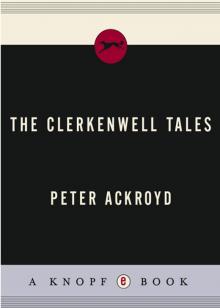 The Clerkenwell Tales
The Clerkenwell Tales The Canterbury Tales
The Canterbury Tales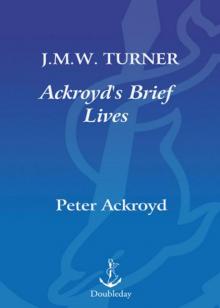 J. M. W. Turner
J. M. W. Turner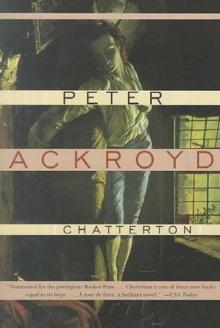 Chatterton
Chatterton The Canterbury Tales – A Retelling
The Canterbury Tales – A Retelling Alfred Hitchcock
Alfred Hitchcock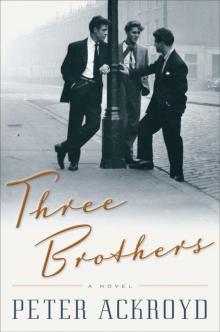 Three Brothers
Three Brothers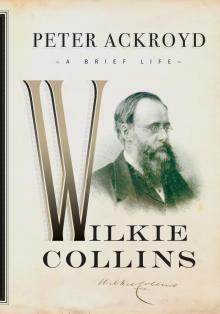 Wilkie Collins
Wilkie Collins Venice
Venice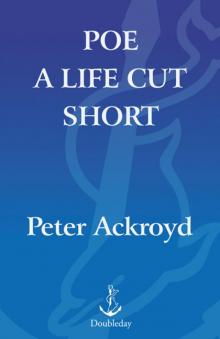 Poe
Poe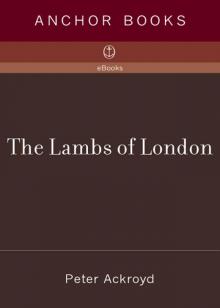 The Lambs of London
The Lambs of London London
London Queer City
Queer City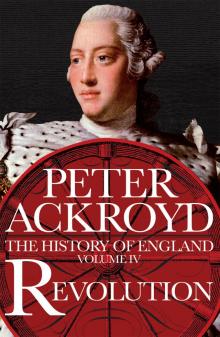 Revolution, a History of England, Volume 4
Revolution, a History of England, Volume 4 Venice: Pure City
Venice: Pure City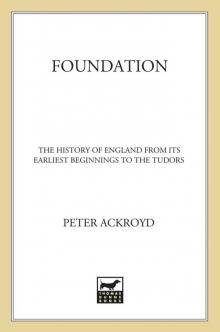 Foundation
Foundation Thames
Thames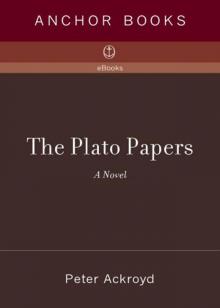 The Plato Papers
The Plato Papers The house of Doctor Dee
The house of Doctor Dee Rebellion: The History of England from James I to the Glorious Revolution
Rebellion: The History of England from James I to the Glorious Revolution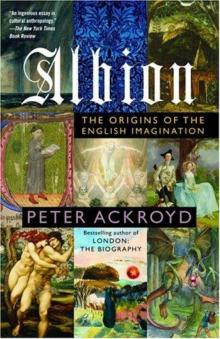 Albion: The Origins of the English Imagination
Albion: The Origins of the English Imagination The Fall of Troy
The Fall of Troy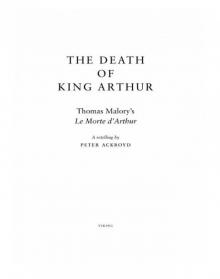 The Death of King Arthur
The Death of King Arthur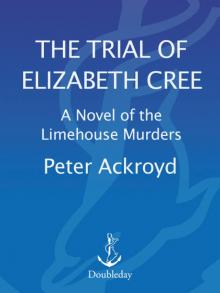 The Trial of Elizabeth Cree
The Trial of Elizabeth Cree London: The Biography
London: The Biography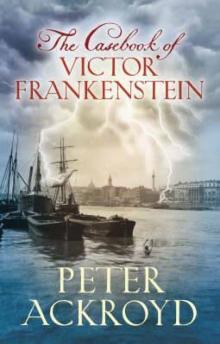 The Casebook of Victor Frankenstein
The Casebook of Victor Frankenstein Hawksmoor
Hawksmoor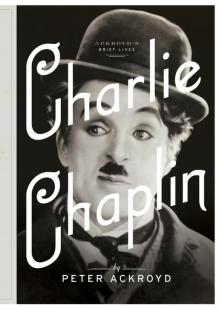 Charlie Chaplin
Charlie Chaplin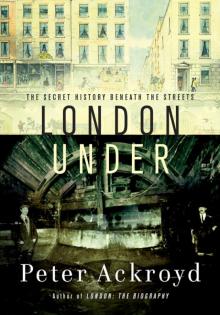 London Under
London Under